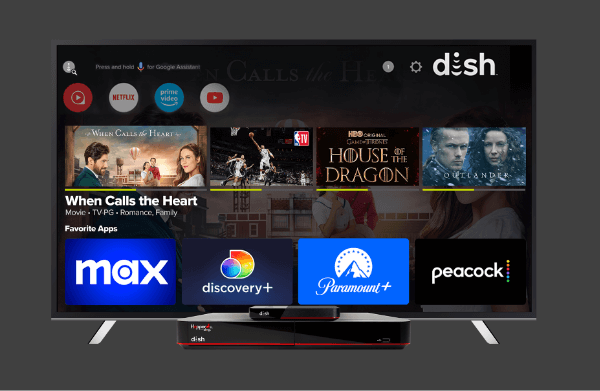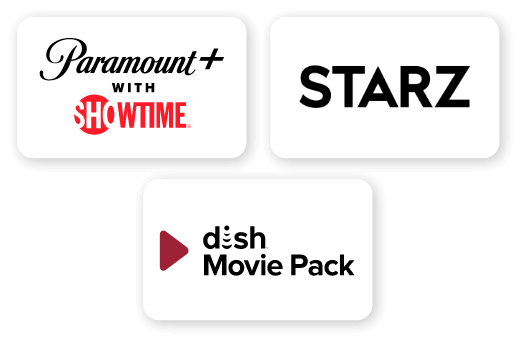How to find the best cell phone plan for you
Shopping for a new cell phone plan can feel overwhelming with the sheer variety of carriers, plans, and promotions available in today’s market. Whether you’re trying to lower your monthly bill, improve your network coverage, or find a plan that fits your family’s unique needs, navigating through the options can be a challenge. Factors like data limits, international calling options, and perks like included streaming services or discounts can all play a role in your decision.
Comparing cell phone providers strategically and understanding what each plan offers can make a world of difference in finding the right fit. This guide will walk you through everything you need to consider, step by step, to make shopping for cell phone plans easier and more effective.
Know Your Usage Needs
Before you compare cell phone plans, it’s a good idea to take a look at your actual usage patterns. Taking the time to analyze your needs can help you avoid overpaying for features you don’t need or running out of essential services like data, talk, or text. Here are a few of ways to break it down:
Data Requirements
The amount of data you need is one of the biggest factors affecting the cost of your plan. To get an accurate idea, check your current usage through your carrier’s app or by reviewing the last few months of your phone bills. Pay attention to trends—are you using more data over time, or has your usage been consistent? Consider these factors:
- How often you stream music, podcasts, or videos when you’re away from WiFi. Streaming services like Netflix, Spotify, or YouTube can quickly eat up your data allowance.
- Whether you use your phone as a mobile hotspot for other devices like laptops or tablets, which can use up significant chunks of data.
- If you frequently download large files, participate in video calls, or play online games, these activities can also require higher data limits.
- Your typical monthly data consumption—look for averages and spikes in usage to understand your minimum requirements.
Talk and Text Usage
Most cell phone plans now include unlimited talk and text, which means you won’t have to worry about running out of minutes or messages. However, some budget-friendly plans still impose limits. If you’re trying to save money with one of these options, review your past talk and text history to ensure it aligns with the plan’s restrictions. Consider if you make frequent international calls or send SMS messages abroad, as these often aren’t included in basic unlimited plans.
Family Size and Multi-Line Needs
If you’re not the only one on your plan, think about how many lines you’ll need and how usage varies among family members. For instance, teenagers or young adults might require more data for streaming and gaming, while others might primarily use their smartphones for calls and occasional browsing. Multi-line plans often provide better value per line compared to individual plans, and some carriers offer customizable options so each line gets the appropriate amount of data. Additionally, consider family-friendly perks like shared data pools, included access to streaming services like Disney+[1], or discounts for bundling multiple lines.
By understanding these key aspects of your phone usage, you’ll be well-prepared to identify a plan that balances cost with your specific needs, ensuring you don’t pay for unnecessary features or face overage fees.
Compare Coverage Areas
Before switching carriers, research network coverage in the areas where you spend most of your time, such as your home, workplace, or frequent travel routes. A carrier with poor service in these key locations can lead to dropped calls, slow data speeds, and unnecessary frustration.
Check Coverage Maps
Major carriers often advertise nationwide coverage, but the quality of service can vary widely depending on your specific location. Start by reviewing the carriers’ coverage maps [2] available on their websites. These maps provide a general idea of where signal strength is strongest and where it may be weak.
However, coverage maps are not always 100% accurate and may not account for real-world obstacles like buildings, terrain, or congestion. Use them as a guide, but don’t rely on them exclusively for your decision.
Ask Local Users
To get a clearer picture, reach out to friends, family, neighbors, or coworkers who use different carriers and ask about their experiences. Their real-world feedback can shed light on issues not reflected in coverage maps, such as signal dropouts in specific areas or unreliable service during certain times of the day. Personal insights from people who live and work near you often reveal coverage gaps or strengths that can help you make a more informed choice.
Understand Your Options
The wireless market offers several types of providers and plans:
Major Carriers vs. MVNOs
Major carriers like AT&T, T-Mobile, and Verizon offer the most extensive nationwide coverage and the fastest data speeds. They are ideal for those who prioritize reliable service in rural areas or high-speed internet for streaming and gaming. These plans often come with premium features like international roaming and hotspot data.
Mobile Virtual Network Operators (MVNOs) [3], such as Mint Mobile, Consumer Cellular, and Cricket Wireless, provide access to the same major carrier networks but at a lower cost. They are a great option if you’re looking to save money and don’t need all the bells and whistles of a major carrier plan. While MVNOs may have some data speed limitations during peak hours, they often offer flexible and affordable plans.
Consider your priorities: do you value premium features and top-tier performance, or are cost savings and simplicity more important?
Prepaid vs. Postpaid
- Prepaid plans are typically more budget-friendly, making them a lot more accessible for a wide range of users. These plans allow you to pay upfront for the month, so there are no surprises on your bill. Prepaid plans are perfect for those who want flexibility, as there are no contracts or long-term commitments.
- Postpaid plans, on the other hand, often include more features, such as unlimited data, perks like streaming subscriptions, and better phone financing options. While they may cost more, postpaid plans provide consistency and convenience, especially if you plan to upgrade your device frequently or rely on data-heavy applications.
Take the time to compare both options to determine which offers the best value for your lifestyle and budget. Whether you prioritize affordability, flexibility, or premium features, there’s a plan out there that fits your needs.
Calculate Total Costs
When shopping for cell phone plans, it’s important to look beyond the advertised monthly rate. The initial, often promotional price might seem appealing, but there are often extra costs that can add up quickly. Taking the time to understand the full picture can save you from unexpected surprises later.
Plan Fees and Taxes
Cell phone plans often come with additional fees, taxes, and surcharges that aren’t included in the advertised price. These extra charges can vary depending on your location and the carrier you choose.
- Always ask carriers for a sample bill that breaks down all charges, so you can see exactly what you’re paying for.
- Be sure to compare the total monthly costs, not just the base rates, as these hidden fees can make a big difference.
- Some carriers may also charge activation fees or other one-time costs, so it’s worth asking about these upfront.
Device Payments
Think carefully about how you’ll pay for your phone, as this can significantly impact your overall spending.
- You can choose to pay the full retail price upfront, which may save you from long-term commitments but requires a larger initial investment.
- Many carriers offer monthly installment plans, making it easier to manage the cost but potentially adding interest or fees.
- Trade-in options can help lower the price of a new phone if you’re upgrading from an older model, though the value you’ll get depends on the condition of your device.
- Look out for carrier promotions aimed at new customers, such as discounted devices or waived fees, as these can help reduce your total costs.
By considering all these factors, you can make a more informed decision and find a cell phone plan that truly fits your budget and needs.
Evaluate Extra Features
Modern cell phone plans often come with additional benefits that can enhance their value beyond just talk, text, and data. These extras can make a significant difference depending on your lifestyle and usage habits. Here are a few key features to consider:
Mobile Hotspot Data
If you frequently use your phone’s hotspot to connect other devices like laptops or tablets, it’s important to check how much hotspot data is included in the plan. Some plans offer unlimited hotspot data, while others may cap it or reduce speeds after a certain limit. Also, consider the speed and reliability of the data for hotspot use—it’s especially crucial if you rely on it for work or streaming.
Streaming Services
Many cell phone plans now include free subscriptions to popular streaming services like Netflix, Disney+, Apple Music, or Spotify. These perks can add considerable value if you’re already paying for these services separately. Take the time to understand which subscriptions are included, how long they are free for, and whether the cost of the plan offsets what you would otherwise spend on these services.
International Features
For individuals who travel internationally or frequently call friends and family overseas, international features can be a game-changer. Look at the plan’s international roaming options, which may include free or reduced-cost data and calls in certain countries. Check the list of included countries and regions to ensure it covers the places you visit most often. Additionally, investigate any extra charges for calling or texting internationally and whether the plan offers specific add-ons for global communication.
By thoroughly evaluating these extra features, you can choose a plan that aligns with your needs and maximizes value for money. Remember, the best plan is one that complements both your daily routine and long-term lifestyle.
Make the Switch
Once you’ve chosen a new plan, follow these steps for a smooth transition:
Check Contract Terms
- Verify any early termination fees with your current carrier
- Understand the new carrier’s terms and conditions
- Review any promotional requirements or commitments
Keep Your Number
- Confirm your new carrier can port your existing number
- Don’t cancel your old service before the transfer is complete
- Have your account information ready for the transfer
Test the Service
- Take advantage of trial periods or money-back guarantees
- Test coverage in your frequently visited locations
- Ensure all features work as expected
Tips for Getting the Best Deal
Use these strategies to maximize savings when shopping for cell phone plans:
Time Your Switch
Timing can make a big difference when it comes to saving money.
- Look for seasonal promotions, especially during new phone launches when carriers are eager to attract customers. These sales often come with discounted plans or perks like free accessories.
- Watch for special offers during major shopping periods like Black Friday, Cyber Monday, or back-to-school sales. Carriers often roll out limited-time promotions during these peak shopping seasons.
- Consider waiting for competitive responses. When one carrier introduces a new plan or lowers prices, others often follow suit with similar or better deals.
Negotiate
Don’t be afraid to ask for a better deal—it’s more common than you think!
- Ask your current carrier about retention offers. Carriers often have hidden deals to keep existing customers from switching to competitors.
- Compare competitive offers from other providers and share them with your current carrier. They may be willing to match or even beat the deal to keep your business.
- Request price matching or inquire about special promotions. Even if they don’t advertise it, many carriers have unpublicized discounts you can access just by asking.
Bundle Services
Bundling can lead to significant savings if you’re already paying for multiple services.
- Some carriers offer discounts when you combine services, such as home internet, TV, or streaming subscriptions, with your cell phone plan. These bundles can simplify your bills and save you money.
- Compare these packages against standalone services to make sure you’re actually getting better value. Sometimes, unbundled plans with different providers can still be cheaper if you don’t need all the extra features in a bundle.
- Look for additional perks like free streaming memberships, additional data, or device discounts that can come with bundle deals.
Find the Right Plan for You
Finding the right cell phone plan requires careful consideration of your needs, budget, and usage patterns. Take time to compare cell phone providers thoroughly, and don’t be afraid to test new services or negotiate better rates. When it comes to cell phone plans shopping, the cheapest plan isn’t always the best value—focus on finding the option that provides the right balance of features, coverage, and cost for your specific situation.
- T-Mobile. T-Mobile streaming bundle with Disney+.
- FCC. Mobile LTE coverage map.
- Tom’s Guide. Mobile Virtual Network Operators (MVNOs) explainer article.






 Call
Call 

 Access Your Account
Access Your Account